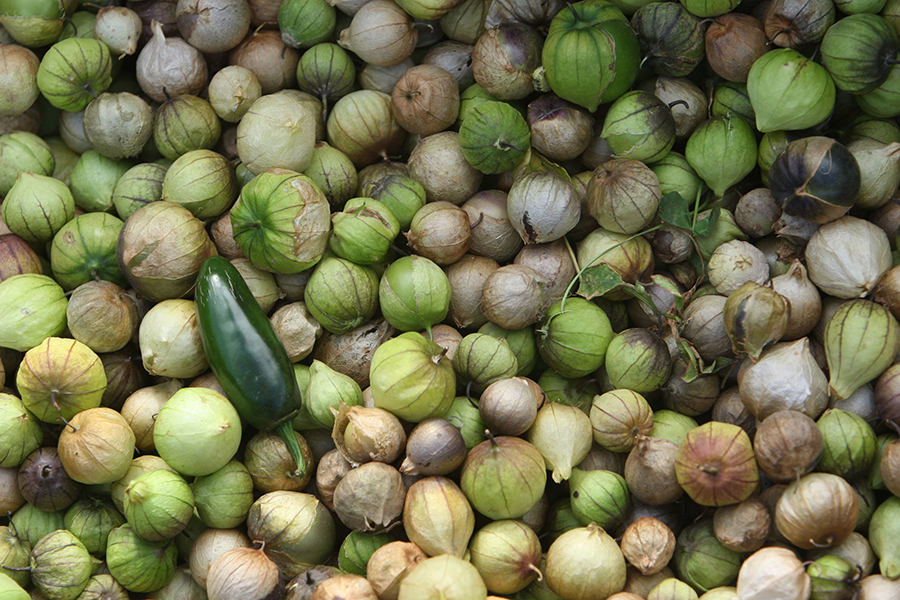When did tomatillos start wearing papery jackets?
Loading...
That tomato you’re eating is a lot older than previously thought – well, at least its ancestors are.
Scientists recently discovered two fossils of an ancient lantern-shaped fruit embedded in 52-million-year-old Patagonian rock, which they say are the relatives of the modern day nightshade family, according to a new study published in the journal Science. Many common foods including potatoes, peppers, eggplants, and tomatoes are nightshades.
The papery, lantern-like husk found silhouetted in the rock resembles the husk that encases modern-day ground cherries and tomatillos (which salsa verde is made of), from the Physalis strain of nightshades, which were previously thought to date back 9 million to 11 million years.
The discovery of the new fossils has caused scientists to recalibrate their previous assumptions about nightshades.
"These astonishing, extremely rare specimens of physalis fruits are the only two fossils known of the entire nightshade family that preserve enough information to be assigned to a genus within the family," Peter Wilf, a professor of geosciences at Penn State University, said in a press release.
"We exhaustively analyzed every detail of these fossils in comparison with all potential living relatives and there is no question that they represent the world's first physalis fossils and the first fossil fruits of the nightshade family. Physalis sits near the tips of the nightshade family's evolutionary tree, meaning that the nightshades as a whole, contrary to what was thought, are far older than 52 million years."
Researchers have known nightshades originated in South America for a long time, but the recalibration of the timeline sheds new light on the evolution of the plant family.
Laguna del Hunco, where the fossils were discovered, is now dry and desolate, but 52 million years ago, it was the shore of a caldera lake in a region of temperate rainforest. The waterside location has led scientists to hypothesize that the air-filled husk may have been evolution’s way helping them float and disperse their seeds.
Whereas it was previously thought ground cherries and tomatillos evolved at around the time the Andes rose, now scientists know these plants were around when the ancient supercontinent Gondwana was in its final stages of separation, when South America was still close to Antarctica and Australia.
"These fossils are one of a kind, since the delicate papery covers of lantern fruits are rarely preserved as fossils," Mónica Carvalho, a former Penn State M.S. student who is now a PhD student at Cornell University, said in a press release.
"Our fossils show that the evolutionary history of this plant family is much older than previously considered, particularly in South America, and they unveil important implications for understanding the diversification of the family."






